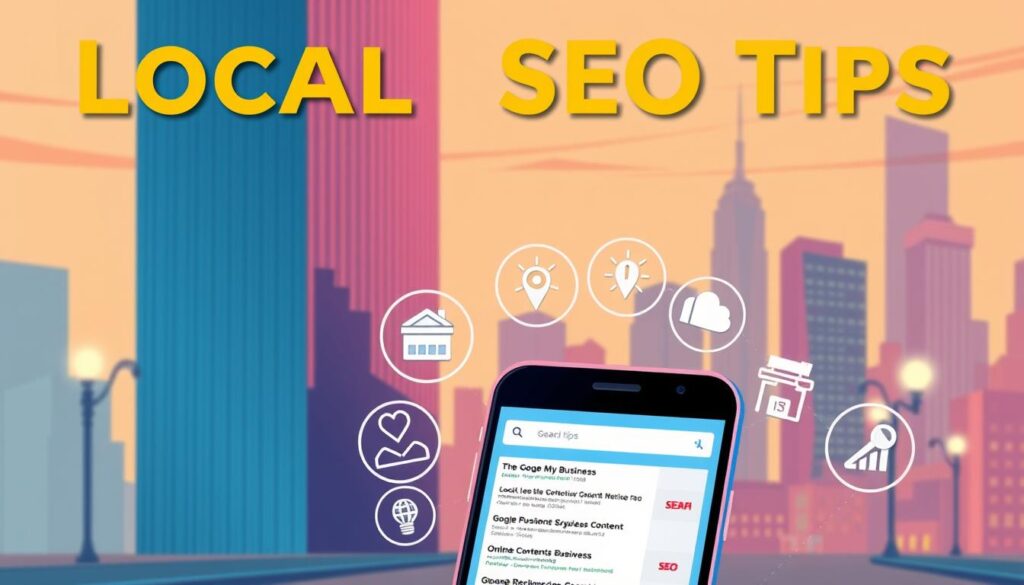Welcome to our comprehensive guide to the best predictive analytics software available today. In this article, we will explore the top tools that are revolutionising the way businesses make informed decisions. Predictive analytics has become a cornerstone of modern business strategy, enabling companies to forecast trends and uncover hidden opportunities with greater accuracy than ever before.
From descriptive analytics, which focuses on historical data, the evolution to predictive analytics has been transformative. These tools now offer automated model generation and augmented processes, making them accessible to both data experts and non-experts alike. Whether you are in healthcare, finance, or retail, predictive analytics platforms can be tailored to meet your specific needs.
Below, we provide a snapshot of eight leading predictive analytics tools: Altair AI Studio, Alteryx AI Platform, Dataiku, H2O Driverless AI, IBM Watson Studio, Microsoft Azure Machine Learning, SAP Analytics Cloud, and SAS. Each offers unique capabilities, ensuring you can choose the one that best fits your organisation’s goals.
Key Takeaways
- Predictive analytics is essential for modern business decision-making and trend forecasting.
- These tools have evolved from descriptive analytics, offering automated and user-friendly solutions.
- Predictive analytics platforms are applicable across various industries, including healthcare and finance.
- Leading tools like Altair AI Studio and IBM Watson Studio provide diverse functionalities for different needs.
- Automated model generation makes predictive analytics accessible to both experts and non-experts.
Exploring the World of Predictive Analytics
Predictive analytics is a powerful tool that helps businesses anticipate future trends and make informed decisions. It goes beyond traditional methods by using data to forecast what might happen next.
What Is Predictive Analytics?
Predictive analytics involves using historical data to predict future outcomes. It relies on statistical techniques and machine learning to identify patterns and trends. This approach helps businesses uncover opportunities and potential risks, enabling them to act proactively.
From Descriptive to Forecasting: The Evolution of Analytics
Traditional analytics focused on describing past events. Over time, this evolved into diagnostic analytics, which aimed to explain why things happened. Today, predictive analytics takes this a step further by forecasting future events.
This evolution has been driven by advances in machine learning and automated processes. These technologies make it easier for businesses to generate accurate predictions without needing deep technical expertise.
How It Works in Practice
Predictive models are used across industries. For example, in healthcare, they might predict patient outcomes, while in finance, they could forecast market trends. Modern tools simplify complex processes, making predictive analytics accessible to a broader audience.
Spotlight on Innovative Analytics Platforms
Let’s delve into some of the most innovative platforms that are shaping the future of business forecasting.
Altair AI Studio, Alteryx AI Platform, and Dataiku
Altair AI Studio stands out with its automated model generation, making it accessible to non-experts. Alteryx AI Platform integrates with Google Cloud’s Gemini, offering enhanced flexibility. Dataiku caters to both technical and non-technical users, providing an end-to-end solution.
H2O Driverless AI, IBM Watson Studio, and Microsoft Azure Machine Learning
H2O Driverless AI excels in feature engineering and model selection. IBM Watson Studio, with its SPSS legacy, simplifies workflows. Microsoft Azure integrates seamlessly with business applications, enhancing efficiency.
SAP Analytics Cloud and SAS: A Brief Overview
SAP Analytics Cloud offers a comprehensive suite integrated with business systems. SAS, with its rich history, continues to innovate, providing reliable solutions.
| Platform | Key Features | Target Audience | Integration |
|---|---|---|---|
| Altair AI Studio | Automated model generation | Non-experts | Varies |
| Alteryx AI Platform | Google Cloud Gemini integration | Data analysts | Google Cloud |
| Dataiku | End-to-end solution | Both technical and non-technical users | Broad systems |
| H2O Driverless AI | Advanced feature engineering | Data scientists | Multiple platforms |
| IBM Watson Studio | SPSS legacy, workflow simplification | Enterprise users | IBM ecosystem |
| Microsoft Azure Machine Learning | Integration with business apps | Azure users | Microsoft services |
| SAP Analytics Cloud | Comprehensive suite | Large enterprises | SAP systems |
| SAS | Modern innovations, reliability | Enterprise customers | Various systems |
Advanced Capabilities and Automation in Analytics
Automation has transformed the landscape of predictive modelling, enabling businesses to save time and reduce complexity. Modern tools now offer automated model generation, which simplifies the process and accelerates deployment. This means you can build high-quality models without extensive coding, making it accessible to both experts and non-experts alike.
Automated Model Generation and Feature Engineering
Automated model generation is a game-changer. It allows you to create models quickly and efficiently, ensuring they are of high quality. This automation also speeds up deployment, helping you get results faster. Feature engineering, another key aspect, is now more straightforward. Advanced tools automatically select and engineer features, reducing the need for manual intervention and enhancing accuracy.
Augmented Processes for Simpler Deployment
Augmented processes have simplified the transition from model creation to implementation. These processes guide you through each step, ensuring your models are robust and ready for deployment. By combining human insight with machine learning, you create a more efficient and effective analytics process.
Machine learning and automated tools facilitate various analytics tasks without requiring deep technical expertise. For instance, automated solutions can handle data preparation, model selection, and even deployment. This blend of human oversight and advanced analytics ensures your business benefits from accurate forecasts and informed decision-making.
Choosing the Right Predictive Analytics Software
When selecting predictive analytics tools, it’s crucial to align them with your business objectives and technical capabilities. This section guides you through key considerations to make an informed decision.
Assessing Your Business Needs
Begin by evaluating your business requirements. Consider factors like cost, scalability, and ease of use. For instance, if your focus is on marketing, tools with strong visualization features may be more beneficial. Additionally, assess how well the software integrates with your existing workflow and systems.
Balancing Technical Requirements and User Friendliness
A good predictive modeling tool should balance technical sophistication with user-friendliness. While advanced features are important, the interface should be intuitive for all users. Visualization capabilities can help transform complex data into actionable insights, making it easier for your team to understand and apply the information.
For marketing teams, solutions like those found in project management software for marketing teams can enhance collaboration and streamline processes. Ensure the tool you choose supports both marketing and operational needs for a holistic approach.
| Platform | Key Features | Target Audience | Integration |
|---|---|---|---|
| SAP Analytics Cloud | Comprehensive suite | Large enterprises | SAP systems |
| IBM Watson Studio | SPSS legacy, workflow simplification | Enterprise users | IBM ecosystem |
| Microsoft Azure Machine Learning | Integration with business apps | Azure users | Microsoft services |
| Dataiku | End-to-end solution | Both technical and non-technical users | Broad systems |
By focusing on your specific needs and ensuring the tool is user-friendly, you can maximize the benefits of predictive modeling and visualization for your business.
Case Studies and Success Stories in Business Analytics
Real-World Applications and Customer Insights
Seeing the real-world impact of predictive analytics can be truly inspiring. Businesses across various industries have harnessed the power of advanced analytics to drive meaningful change. Let’s explore some remarkable success stories that highlight the practical application of these tools.
A leading logistics company used predictive analytics to optimise their delivery routes, reducing fuel consumption by 15%. By mining their dataset, they identified patterns in traffic and demand, enabling smarter decision-making. This not only cut costs but also improved their environmental impact.
In the financial sector, a major bank implemented predictive models to detect fraudulent transactions. Their advanced analytics system analysed millions of data points, flagging suspicious activity with high accuracy. This approach reduced fraud incidents by over 20% within the first year.
Marketing teams have also benefited from these tools. A retail company used predictive analytics to enhance lead scoring, resulting in a 30% increase in conversion rates. By understanding customer behaviour through their dataset, they tailored campaigns to target high-value leads more effectively.
These case studies demonstrate how predictive analytics can transform raw data into actionable insights. Whether it’s streamlining operations or uncovering new opportunities, the results speak for themselves. For more insights on how your team can leverage similar tools, explore our guide on marketing automation software for agencies.
Future Trends and Predictions in Predictive Analytics
As we look ahead, the landscape of predictive analytics is set to undergo significant transformations. Emerging technologies and automation advances will play a pivotal role in shaping this future.
Emerging Technologies and Automation Advances
By 2025, machine learning innovations and automation will redefine how businesses approach decision-making. These tools will become more accessible, enabling organisations to make smarter predictions without extensive technical expertise. For example, healthcare providers could use advanced models to predict patient outcomes more accurately, while retailers might leverage these tools to forecast consumer trends with greater precision.
What to Expect by 2025
The integration of AI-driven solutions will simplify complex processes, making predictive analytics more user-friendly. Collaborative efforts will become essential, ensuring that data-driven decisions align with business goals. As highlighted in Forbes, the future of analytics lies in seamless integration and accessibility. Additionally, the role of marketing trends will further enhance the practical applications of these technologies.
These advancements will empower businesses to stay ahead of the curve, making informed decisions and driving growth in an ever-evolving market.
Conclusion
In conclusion, understanding the landscape of modern analytics tools can empower your business to make smarter decisions. Throughout this guide, we’ve explored how these tools have evolved from traditional methods to advanced solutions that forecast future trends and uncover hidden patterns.
Choosing the right platform is crucial, and aligning it with your business needs ensures maximum success. The case studies highlighted recurring patterns in finance and retail, where these tools drove significant improvements. For instance, optimising delivery routes and detecting fraudulent transactions showcased the practical benefits of advanced analytics.
The integration of automation and intelligence has simplified complex processes, making it easier for businesses to adopt these solutions. Collaborative decision-making, supported by data-driven insights, fosters a culture of continuous improvement and innovation.
As you move forward, remember that the key to success lies in balancing technical capabilities with user-friendly design. Whether you’re in finance or another industry, the right tool can transform your approach to business challenges. We encourage you to explore further resources and case studies to deepen your knowledge and confidence in this field.
FAQ
What is predictive analytics?
Predictive analytics uses historical data and machine learning to forecast future events, helping businesses make informed decisions and uncover opportunities.
How does predictive analytics work?
It works by analysing datasets to identify patterns and trends, creating models that predict future outcomes, enabling proactive business strategies.
What are the benefits of using predictive analytics in business?
It enhances decision-making, optimises operations, and improves customer experiences by providing actionable insights and forecasts.
Which tools are popular for predictive analytics?
Tools like IBM Watson Studio, Microsoft Azure Machine Learning, and Dataiku are popular, offering robust features for model development and deployment.
How do I implement predictive analytics in my business?
Start by identifying your goals, preparing your data, choosing the right platform, and deploying models to generate valuable insights.
What are the future trends in predictive analytics?
Expect advancements in automation, integration with AI, and more user-friendly platforms, making predictive analytics accessible to all skill levels.










